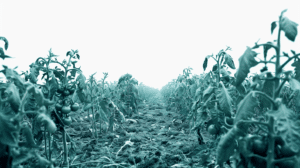Accounting for agriculture-based scope 3 emissions within the food value chain is a considerable challenge, but it can also offer considerable rewards in the carbon market for those willing to make the effort.
For food and beverage companies, agricultural greenhouse gas emissions are both a burden and an opportunity. Agricultural emissions are considered a part of F&B’s scope 3 emissions – that is, emissions produced in the supply chain. Snack giants Mondelez international and MARS, for instance, attribute 50% and 38%, respectively, of their scope 3 emissions to agricultural products.
However, transitioning to sustainable practices stands to significantly lower these numbers and even establish a novel revenue stream through the carbon markets.
McKinsey predicts that the carbon market will exceed $50 billion by 2030. Trading volumes recently reached 15.8 gigatons of carbon dioxide – a €760 billion value – 24 percent higher than those traded in 2020. The market potential is significant, but so are the challenges.
The challenge: Continuously auditing and validating carbon credits
Throughout the transaction process from issuance to sale, holders of both regulatory and voluntary carbon credits must have them monitored and verified to ensure transactions’ legality and guarantee transparency and reliability. They must pinpoint the polluting activities, quantify resource use and measure and calculate emissions. They must also produce net zero labeling and certifications, subject to audits through research, site visits and interviews, technical risk assessments, and documentation analyses.
The basic process consists of 3 steps:
- Step one: Establish the baseline, analyzing the farm’s current carbon sequestration status.
- Step two: Collect and precisely record data over time and use independent lab analysis to demonstrate improvements from regenerative and sustainable practices.
- Step three: Invite a third-party to audit and verify the data to acquire tradable carbon credits.
Overcoming the auditing burden
The more qualified the auditing body and the more rigorous the auditing process, the higher the value of the carbon credit. Profits from credit sales can then be reinvested into farm improvement and further carbon sequestration activities, reaping even more future benefits.
Smallholder farmers and small agribusinesses don’t really have the extra capital required to invest in establishing carbon accounting infrastructure. However, they can leverage existing technologies and practices to get there.
They may already be collecting significant volumes of data when it comes to irrigation, fertilization, and plant growth. The same data can be applied to achieve carbon sequestration insights and measurements, producing digital documentation to streamline carbon accreditation.
Harnessing agronomic intelligence
Speed up the assessment process with detailed, digitized, audit-ready documentation, cross referenced with reporting, sensor data and satellite evidence . Farmers can get an accurate picture of their carbon emissions, make more efficient and cost-effective use of inputs, and overcome the challenges of participating in the carbon market.








